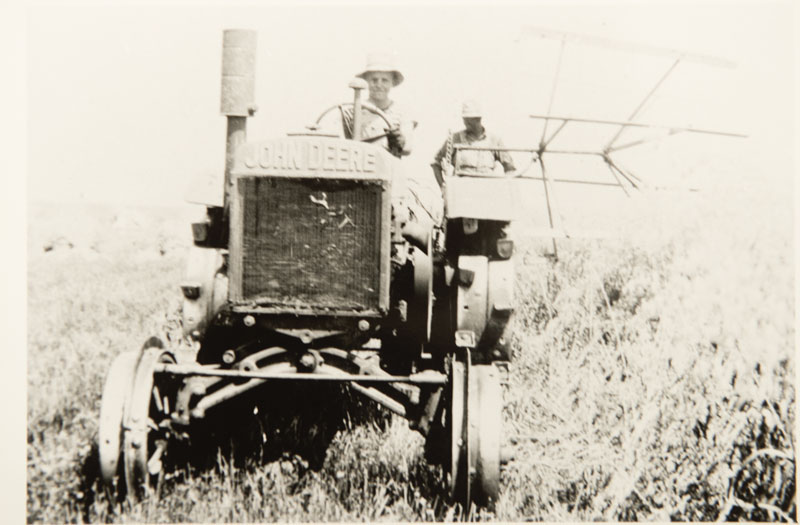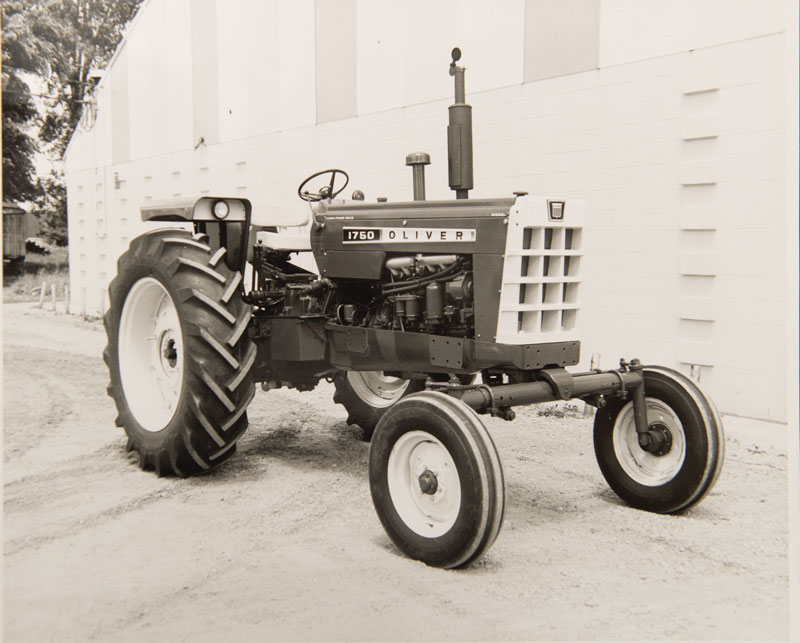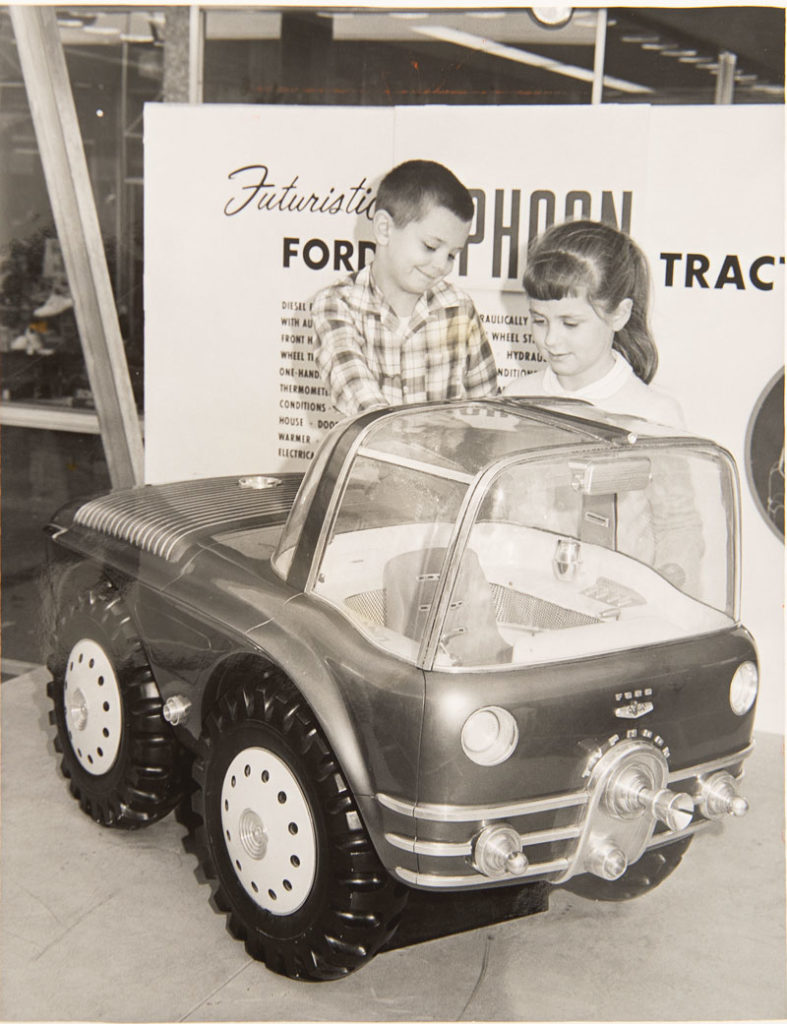If there is one symbol for Iowa agriculture and innovation, it is the tractor.
Since the machine’s early history in the corner of northeast Iowa, the tractor has been the most persistent yet ever-changing mark of innovation – and some controversy – in U.S. agriculture. While the history is long and the changes are nonstop in today’s industry, this timeline examines the highlights of the tractor’s evolution and cultural impact over the years – and into the future.
Mid-1800s
Stationary but portable steam-powered engines use wood, coal or straw to fuel threshing machines for separating and cleaning grain. Draft animals are used to haul the machine wagons into the field; the machines are cumbersome and a fire risk on windy days.
1892
John Froelich of Froelich, Iowa, builds a gasoline-powered traction engine to replace bulky, inefficient and dangerous steam engines. The first model features a one-cylinder engine mounted on the running gear of a steam traction engine.
Froelich’s claim on the gasoline-powered traction engine is disputed today by company Case IH, which reports founder Jerome Increase Case of Racine, Wis., built a gasoline-powered traction engine, also in 1892. Case allegedly found the market unwilling to transition from steam, and waited until 1911 to introduce his engine.
1893
Froelich founds the Waterloo Gasoline Traction Engine Co. with Waterloo businessmen to manufacture his gasoline traction engine. The traction engine is a commercial failure; two were sold and shortly returned. Froelich sells the company to John W. Miller in 1895, who renames it the Waterloo Gasoline Engine Co.
1901
Charles W. Hart and Charles H. Parr debut the first Hart Parr two-cylinder gasoline traction engine, which the two advertise as “tractors.” The Hart Parr Co. begins exporting tractors from Floyd County, Iowa, abroad in 1907.

1914
The first Waterloo Boy tractor, a two-cylinder single-speed tractor, is introduced. The Waterloo Boy is much smaller and less expensive than Hart Parr’s original model. Waterloo Gasoline Engine Co. later adds two forward speeds to the Waterloo Boy.
1918
Illinois-based Deere & Co. purchases the Waterloo Gasoline Engine Co. on March 14.
1919
International Harvester (now Case IH) markets the commercial power takeoff in its 8-16 tractor model.
1932
Over a million lightweight tractors have been sold. Three companies –International Harvester, Deere & Co. and Allis-Chalmers – represent more than 50 percent of the market.

1950s
Allis-Chalmers begins research of fuel cell battery tractors, which convert chemical energy to electric energy rather than traditional batteries, which store energy. Deere & Co. hires Henry Dreyfuss’ industrial design studio to enhance tractor aesthetics for a competitive edge.
1972
Deere & Co. opens the first electric foundry in Waterloo. In 1975, Deere announces plans to build a new 189-acre engine facility called John Deere Engine Works.
1979
Thousands of farmers transport their tractors to Washington, D.C., for the American Agriculture Movement Tractorcade protest beginning on Feb. 5. Protesting farmers occupied the National Mall for weeks to demand more pay for crops and an increased role in agricultural policy decisions.
Washington, D.C., claimed the protest was costing taxpayers an estimated $1 million in tractor damage to the National Mall. When a blizzard and the accompanying 22 inches of snow hit on President’s Day weekend, farmers – owning some of the only machines that could handle the snow – began plowing out hundreds of cars and stranded citizens and transporting medical staff to hospitals. American Agriculture Movement member wives in D.C. spent days at hospitals to help cook and clean while regular staff was unable to get to work, helping the AAM turn public opinion in favor of the protesting farmers.


1992
Al Myers invents the crop yield monitor, ushering in precision farming technology. Farmers link the yield monitor data to GPS-plotted locations for detailed yield maps. In his first year, Myers sold only 10 yield monitors; by 1995 he sold 1,500 units.
1994
Deere & Co. creates the Precision Farming Group.
1995
Rockwell International Corp., known as a defense contractor, uses its knowledge of military satellites to launch its precision agriculture Vision System, which creates detailed field maps by pairing the volume of crops harvested with GPS location data. Despite positive early adoption, interest in the technology slows and Rockwell exits the agricultural field. Deere & Co. researches its first GPS receiver, the GreenStar Precision Farming System (nicknamed “Green Eggs and Ham”), which debuts in 1996.
2002
Deere & Co. launches the first John Deere AutoTrac guidance and automated steering system. AutoTrac allows tractors to automatically steer on a straight line entered by an operator.
2010
Deere & Co. launches the Intelligent Solutions Group, based in Urbandale. The department employs more than 800 software developers, systems engineers, product testers and customer support personnel, according to Deere & Co.
2016-17
As tractor tech gets techier, operators are pushing back under the growing Right-to-Repair movement that began with personal technologies such as laptops and phones – leading to controversy between farmers and equipment manufacturers.
Operators organized after Deere & Co. began requiring farmers to sign end-user license agreements meant to protect the company’s intellectual property rights, preventing operators from repairing or hiring a third party to repair or tinker with John Deere software.
In December 2017, the Iowa House introduces a Right-to-Repair bill (HF 556) requiring manufacturers to make diagnostic and repair information available to independent repair providers or machine owners. The bill has yet to be signed into law.

2018-present
2018 is named Year of the Tractor at the National Museum of American History.
Agtech startups are already implementing machine learning to automate various agricultural tasks. Many startups are building cloud-based software that can overlay with existing tractor functions, allowing operators to track everything from each tractor’s path and timing through fields, down to each plant individually identified as crop or weed.
Ames-based startup Smart Ag debuts its driverless AutoCart cloud software platform at the Farm Progress Show in August. The system interfaces directly over an existing grain cart tractor’s controls, allowing operators to manage a tractor’s route and stops from outside the cab.
In February 2018, the Association of Equipment Manufacturers (AEM) and the Equipment Dealers Association (EDA) reach an agreement known as a statement of principles to provide diagnostics and repair tools to operators through authorized dealers.
The AEM/EDA agreement, which requires manufacturers to provide product guides, service manuals and diagnostics tools, among other things, does not go into effect until Jan. 1, 2021, and manufacturers are not required to provide the same resources to machines purchased before that date. That agreement causes controversy among farmers and activists, who accuse the EDA of signing away farmers’ rights to access or modify source code on machinery they own.
